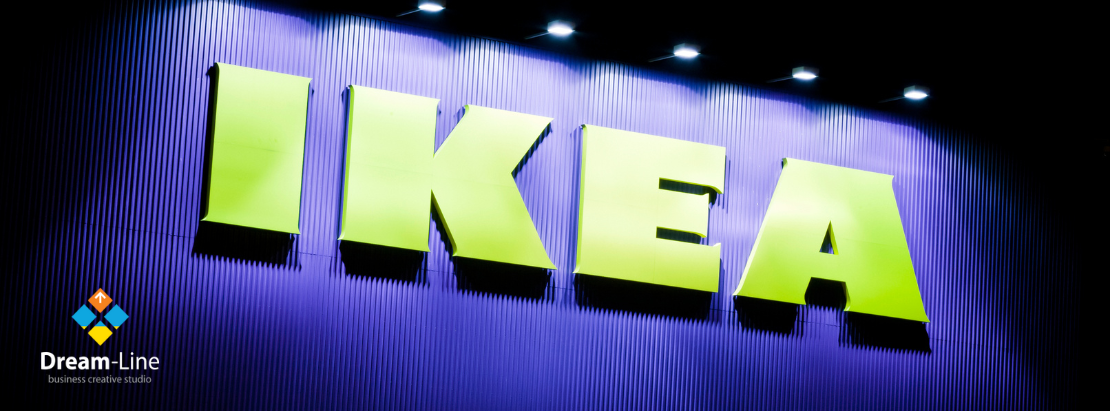The IKEA effect - almost DIY.
The IKEA effect is that a person appreciates and tends to overestimate things that he has made himself simply because he is involved in their creation.
Recently I wanted to buy a mat for our cat. By chance (just in time) on TikTok I came across a video instruction of a rather simple rug with multi-colored stripes of fleece. Super easy! After an hour-long marathon in the nearest stores, I went to the fabric store. As a result, the rug turned out so beautiful that Anthony Rubio himself would be proud of me, but I must admit that in the process I regretted several times that I simply didn't buy a ready-made rug. It was much more convenient to purchase all supplies at the pet store, then I would enjoy the creation process, but I wouldn't have to spend so much time and effort to find all the ingredients. This is what behavioral economists call the IKEA effect.
Recently, this effect has gained particular popularity and surrounds us at every turn. Over the past 5 years, many startups built on this psychological effect have become successful. These are paintings by numbers, various constructors and puzzles for children and adults.
Parents also know how this scheme works. No ready-made toy gives such pleasure as the one that the baby can make himself. The most obvious example is, of course, Lego blocks - a classic example of how the IKEA effect works for the little ones. Of course, it's fun to play with an already assembled spaceship, but the most interesting thing is to build the model step by step according to the instructions.
It is on the example of Lego that one can explain why the IKEA effect doesn't always work. If we ask a 4-year-old child to build a spaceship according to the instructions for a 10-year-old child, it will probably not be fun, even if the construction can be completed with the help of parents. Too much effort to assemble a toy, too much time - a fun game turns into a test, most likely the assembled toy will go to the basket in a day. At the same time, two plastic hangers linked together will be the most beloved spaceship for the coming week.
Thus, one's own work seems to be more valuable than that created by someone else, and almost equal in value to that created by experts. However, this effect doesn't work when the work is too hard or when we spend too much time on it, compared to the expected effect.
The IKEA effect is not limited to toys, furniture, paintings. It has been successfully used in other industries as well, because your own contribution to the creation of a product does not have to mean physical labor, such as driving screws or collecting finished parts.
The IKEA effect appears only when: the result is tangible. "I put together a wardrobe, here it is in my bedroom, and I use it." The work turned out to be within my ability and not too easy. It is not necessary to set tasks that are too difficult or too simple for the client. The end result should be equal to the time and effort spent, as well as meet expectations. The degree of compliance may vary. One is quite enough "not a curve, not falling apart - it's normal", for others it's good only if "everything worked out, it's the same as in the photo."
A logical question arises, how to apply this effect in different areas of business? We will write about this further.
Research has shown that three factors are needed to achieve the IKEA effect:
- Efforts;
- Reflection of competence;
- Completion.
It is important to make an effort, but participants must also be able to complete the task. In studies where participants failed to complete the task, the willingness to pay for the item decreased. When they built the project and then had to take it apart, there was no IKEA effect either.
How to achieve the IKEA Effect in different areas:
- Get people to interact with the product. For example, app developers are encouraged to provide sample data, pre-populated defaults, and editable templates so that people can put effort and creativity into creating their account.
- Give customers the opportunity to customize your product. For example, Nike allows customers to design their own sneakers. Customers can choose colors, stitching and features. And for such a product they are willing to pay twice as much!
- Ask customers for feedback, suggestions, and ideas. Customers will then put in the effort of answering your questions, feel that their opinion is valued, and feel more attached to the company.
- Offer experiences that are challenging but not overly difficult. If your product already requires some effort, such as filling out a form to sign up for the program, make sure it doesn't take too long for the person to complete the task.
- Add some creativity. A study by Dahl and Moreau (2007) shows that customers are more satisfied when there is a limited amount of creativity they can show when interacting with a product.
An example of using the Ikea effect for customer service is AI chatbots. Typical virtual chatbots first ask about your preferences and then answer questions based on the information received. This gives the client a sense of satisfaction only because, based on these preferences, such chatbots create a sense of personalization and communication with a real person.
An example of using the Ikea effect when creating content. People love the content they create. User-generated content is an easy way to engage customers as well as build brand loyalty. Engage customers by getting their feedback, co-creating content, tagging them on social media, let's vote on created content, encourage feedback and recommendations. Promoting this type of content is easier because the audience feels a personal connection to the written story, which they usually want to share.
Business Tips:
- Make your team important. Giving people on your team a voice and permission to participate in the decision-making process means they will become attached to the company and perform better.
- Feel free to ask new employees for their opinion and let's give the opportunity to contribute to the development. The sooner they are involved in work processes, the sooner they will feel that the work is valuable to them.
- Don't underestimate crowdfunding platforms. They don't just raise money, they make people love the product before it's even released.





